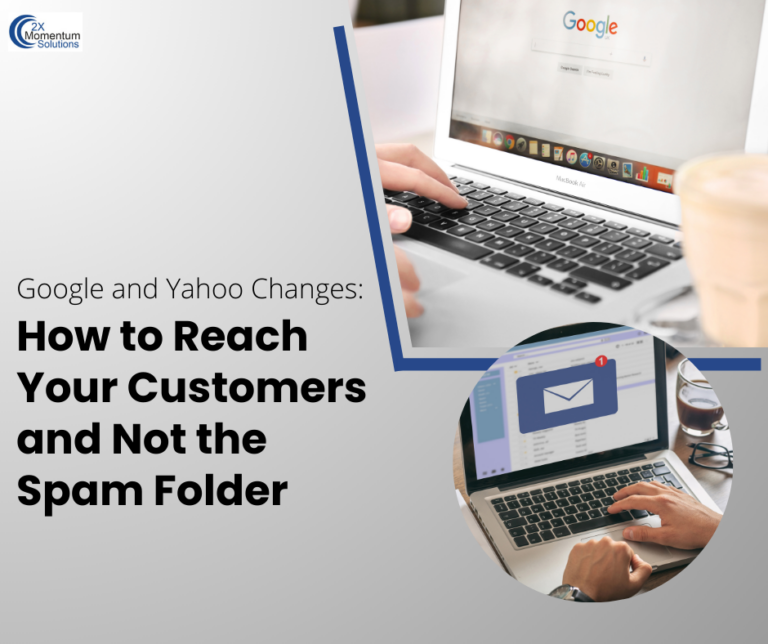Nobody likes spam emails—that’s a fact! And this year, Google and Yahoo have made some changes in an effort to keep inboxes cleaner and keep consumers safe from malicious emails.
If your business uses bulk emails (defined as 5000 or more emails in one day) to reach your target audience, it’s important to be aware of these changes. By following these standards, you can keep more of your emails out of spam folders and reach your potential customers’ inboxes as intended!

These new changes include:
· One-click unsubscribes
· Lower spam thresholds
· Three-part email authentication
Let’s run through each change and some quick tips for success!
1. One-Click Unsubscribes
The new regulations from Google and Yahoo require bulk email senders to have a one-click unsubscribe option in all emails. This means senders can no longer force consumers to log in or follow multiple links to unsubscribe. Also, senders only have two days to process unsubscribe requests.
Quick Tip: You can provide more options than just a simple unsubscribe. Customers may want to unsubscribe from one type of email (e.g. weekly promotions) but stay subscribed to another (e.g. a monthly newsletter).
2. Lower Spam Thresholds
A spam threshold refers to how strict an anti-spam system is. Every bulk sender has a spam rate. Your spam rate is the percentage of your emails that are being marked as spam by the recipients. If your spam rate exceeds the spam threshold, Google and Yahoo will start restricting your bulk emails and not delivering them to the recipients.
For Google, specifically, you should aim to keep spam rates below 0.10% and absolutely avoid reaching a rate of 0.30% or higher. If you’re getting close to the .30% mark, which is 2-3 complaints for every thousand emails, you need to take a serious look at your email marketing lists and strategy!
Quick Tip: Clean up your lists to make sure you’re not emailing anyone who doesn’t want to be emailed. Improving your unsubscribe process should help with this, but don’t forget about list hygiene—you should go through periodically to remove invalid email addresses, duplicates, and anyone who hasn’t engaged with your emails in a long time. When your list is clean, you’ll likely get fewer spam reports. The goal is to only be emailing true prospects!
3. Three-Part Email Authentication
Email authentication is the process of verifying the identity of a sender. This helps consumers stay safer from phishing attempts and other malicious emails. Email authentication best practices require three different mechanisms to be in place:
· Sender Policy Framework (SPF)
· DomainKeys Identified Mail (DKIM)
· Domain-based Message Authentication, Reporting and Conformance (DMARC)
We won’t get into the details here, but these three precautions help ensure that senders are truly who they say they are. Google and Yahoo now require bulk senders to have all three mechanisms in place.
Quick Tip: If the above bullet points are gibberish to you, don’t hesitate to get help with setting up your authentication!
Need Help with Email Marketing?
We’re here to help you with developing an email marketing strategy, running campaigns, building databases, or any other aspect of email marketing.
At 2XM, we understand the importance of building trust and loyalty with your audience. That’s why we’ll make sure your brand and mission are adhered to in every email and that you’re reaching your ideal audience in a cost-effective manner. Contact us today for a FREE 60-minute consultation.
